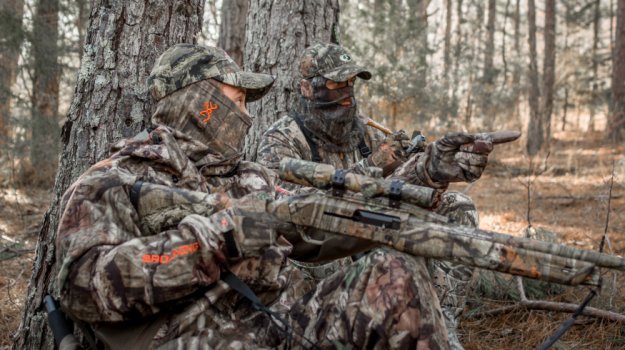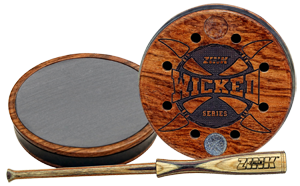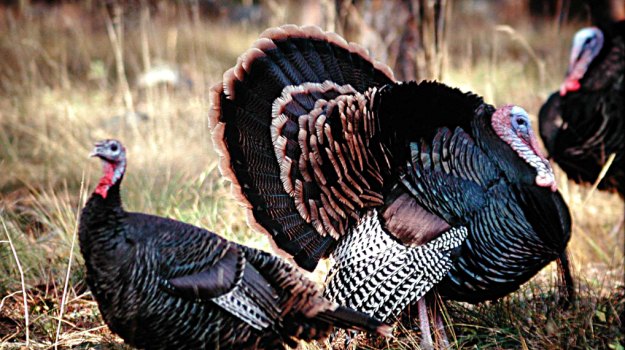
Editor’s Note: Matt Morrett represents Zink Wild Game Calls, Avian X decoys and the Plano Company. He has been a Mossy Oak Pro most of his life. After winning his first World Turkey Calling Championship when he was 16-years old, he has stacked-up turkey calling championships higher than he is tall. During turkey season, he probably sleeps in Mossy Oak camo, so he can jump out of the bed before first light and get out into the turkey woods. We've asked Matt this week to tell us how he deals with some of the worst turkey-hunting problems.
I've been in the outdoor industry for 30 years, and I've been hunting turkeys longer than that. I spent my childhood listening to and trying to sound like wild turkeys. When I was 16-years old, I won the World Turkey Calling Championship in the Friction Call Division. I continued competing in turkey calling and won five World Championships, the Grand National and the U.S. Open.
Friction calls are what gave me the opportunity to become a part of the outdoor industry, win contests, take turkeys and live a life bigger and better than I ever could have dreamed. I don’t care if I'm calling with a simple push-button friction call or a Crystal Friction Wicked Series Call, because the sound and the tone of the wild turkey is built into those calls. You don’t have to make a friction call sound like a wild turkey. The call already knows how to do it. All you have to do is to develop the right rhythm and cadence and know when to say what with a friction call.
In 2 minutes or less, you can learn to push the dowel on a push-button call and call in a wild turkey. In 5 to 10 minutes you can learn to use a slate or a glass-type friction call. You can make a yelp, a cluck, a purr and a cutting sound and call in a wild turkey. For this reason, friction calls are the easiest and simplest to learn.
 However, most importantly, you need to learn when to call and when not to call. Because friction calls are so easy and so much fun for the hunter to use, one of the big mistakes that many hunters who use friction calls make is overcalling to a turkey. When a turkey answers a friction call by gobbling, and the next time you call to the turkey he gobbles, but he's closer to you than he was the first time, then the call has done what it’s supposed to do. The call has told the gobbler where you are, that you're a hen turkey, and that you're interested in him. All he has to do is find you, and the two of you can have a date. Since the call has done what you’ve wanted it to do by getting the gobbler to start coming to you, many times you don’t have to do any more calling. But let’s face it. Being able to talk to a turkey and having him talk to you is really a lot of fun. For that reason, we often continue to call. Then the gobbler may hang-up (stop coming). He's thinking, “If that hen is continuing to call to me, she’s really ready to breed. I should be able to see her, or she should be on the way to me.” If you stop calling when a gobbler is coming to you, that old gobbler may think, “That hen is interested in me. All I have to do is get close enough to her for her to see me, and she’ll be really impressed. Then the two of us can get together.”
However, most importantly, you need to learn when to call and when not to call. Because friction calls are so easy and so much fun for the hunter to use, one of the big mistakes that many hunters who use friction calls make is overcalling to a turkey. When a turkey answers a friction call by gobbling, and the next time you call to the turkey he gobbles, but he's closer to you than he was the first time, then the call has done what it’s supposed to do. The call has told the gobbler where you are, that you're a hen turkey, and that you're interested in him. All he has to do is find you, and the two of you can have a date. Since the call has done what you’ve wanted it to do by getting the gobbler to start coming to you, many times you don’t have to do any more calling. But let’s face it. Being able to talk to a turkey and having him talk to you is really a lot of fun. For that reason, we often continue to call. Then the gobbler may hang-up (stop coming). He's thinking, “If that hen is continuing to call to me, she’s really ready to breed. I should be able to see her, or she should be on the way to me.” If you stop calling when a gobbler is coming to you, that old gobbler may think, “That hen is interested in me. All I have to do is get close enough to her for her to see me, and she’ll be really impressed. Then the two of us can get together.”
With a friction call, there's no one in the country who can’t sound like a live turkey hen. Few hunters can make a diaphragm mouth call sound like a real, live turkey hen, but anybody in the U.S. can pick up a friction call and make that friction call sound like a real, live wild turkey hen. That’s the reason I love to use and encourage other hunters to use friction calls. The friction calls solve one of the biggest problems in turkey hunting - how to sound like a live turkey hen.






























